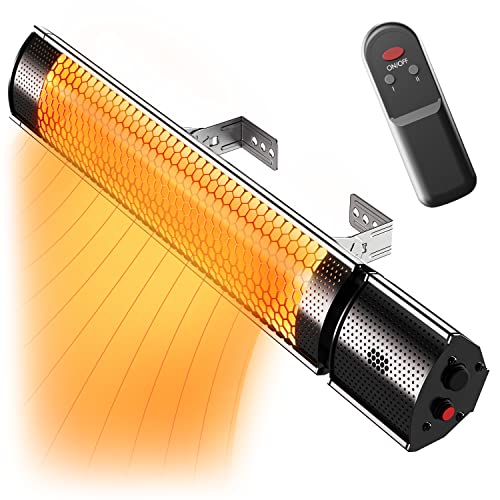How to Choose a Patio Heat Lamp Electric
There are many options available when it comes to heating your patio. Unlike propane models that require refills electric heaters can provide instant heat by simply flipping the switch or pressing a button.
These units don't emit any gasses that could cause the risk of health hazards. Certain units come with adjustable heat settings to allow for different distances.
hanging electric patio heater of Heater

With the appropriate patio heater, you can comfortably enjoy your outdoor living spaces well into the night and across the seasons. patio heater electric infrared are available in a variety of varieties that include freestanding propane or natural gas models as well as ceiling or wall-mounted electric radiant heaters. Your choice will depend on the dimensions of the area, the power sources and personal preference.
The majority of patio heaters are powered by electricity or liquid or natural gas and emit heat in convection and radiant heating. The output of patio heaters is measured in watts which can be converted into British thermal units (BTUs) to give a comparative. Certain models come with adjustable temperatures to allow more flexibility.
Patio heat lamps include an electric burner on a pole with a perforated screen that reflects flames and radiates heat downwards to warm objects, people and furniture. Some have a reflector above the burner that can be silvered to reduce the amount of heat that is lost upwards.
The most popular kind of patio heater is a gas patio heater is usually found in outdoor seating areas of bars and restaurants because they produce a lot of heat quickly and distribute it evenly in all directions. They are great to heat tables. These patio heaters are portable and be powered by a propane tank or plumbed in to your natural gas line. The latter is more convenient and has lower initial costs, but requires fuel.
A growing number of homes are equipped with natural gas lines, making them the perfect solution for those who prefer using a gas patio heater. They're easy to set up, however they require a dedicated and properly functioning gas line in order to operate safely. Portable natural gas heaters are available with extension hoses that can help overcome this issue, however these can be a tripping hazard and may pose an additional fire hazard when not in use.
Safety
The majority of electric patio heaters are safe to use in covered areas since they allow the heat to radiate outward instead of upwards toward material that is combustible, such as the roof. They are not intended for use under an unprotected roof. The heater must be located at least 6" away from the ceiling or 18" away from the adjacent wall to prevent fire hazards.
The propane and gas patio heaters are only suitable for installation in enclosed areas that have an enduring cover designed for outdoor use. These covers are usually made of fire-retardant fabric and have an open roof that can be closed. The safety concerns associated with these types of outdoor patio heaters are due to the fumes and flames they produce. They should be located away from objects that ignite like chairs and curtains.
Follow the instructions and safety measures of the manufacturer before installing a patio heater or patio heat lamp. Be sure to select the one with UL and CSA certifications, and read the owner's manual thoroughly. Be especially careful when it comes to pets and children, and make sure the heater is not near them when it's running. Some patio heaters that are freestanding like EUROM come with a built-in tipping safety that automatically shuts off the device if it falls over.
If your patio heater is connected to natural gas lines, it's important to check the condition of the line regularly and to test it for leaks by a qualified professional. If the line needs to be replaced, make certain to get an authorized plumber. A professional will be able to determine if the line is properly routed or if it should be run through an underground pipe. Additionally, a professional can make sure the heater for your patio is connected into an outlet that's GFCI (ground fault circuit interrupter) rated to protect against electrical shocks and fires.
Installation
The height of the patio heater will determine the amount of heat it emits into the room. It is essential that the heater is placed at an appropriate distance from any surfaces like plastic, which can deform as well as wood, which can become too hot. The heater can be mounted on a structure, wall or any other surface using standard mounting brackets. Certain models come with a soft start feature, which reduces peak current in order to protect your circuits.
